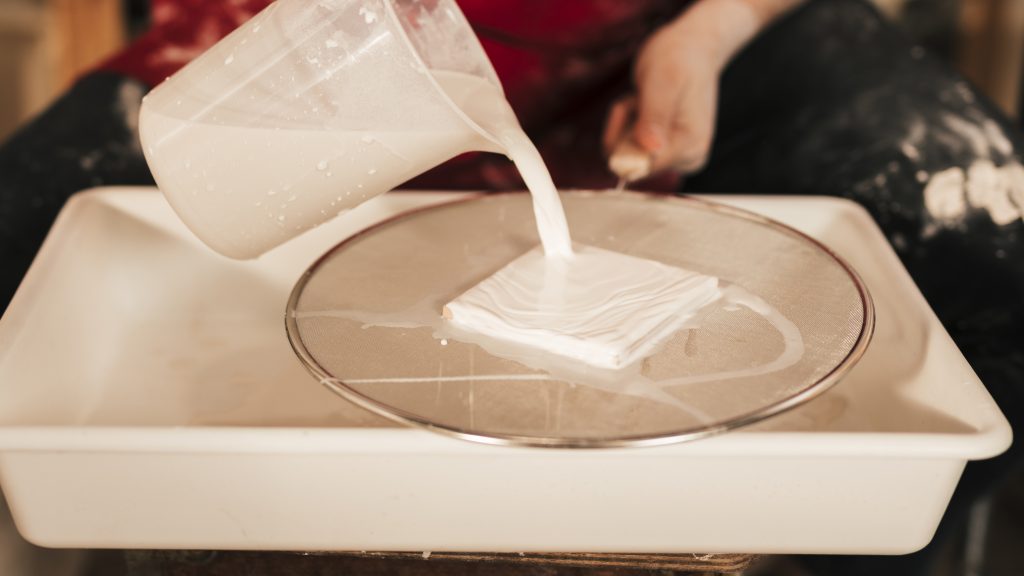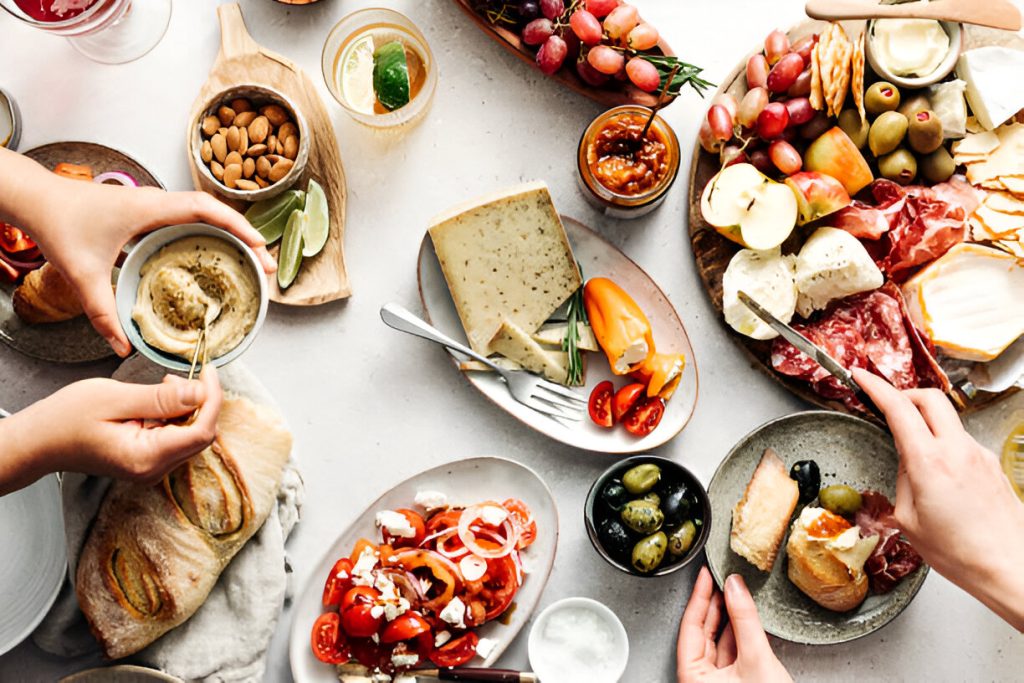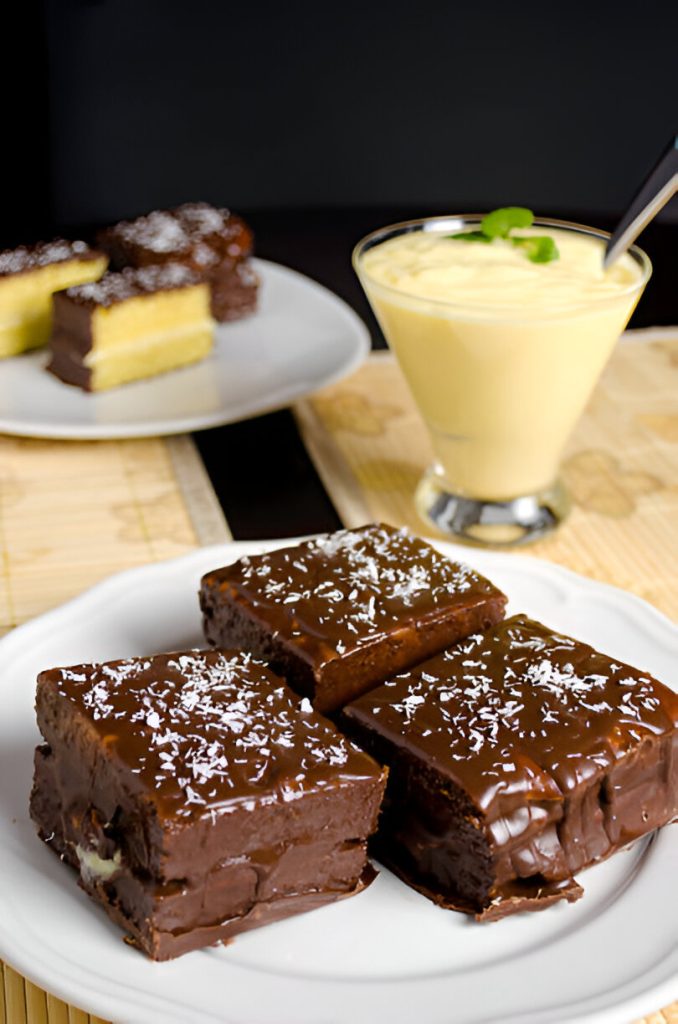Embark on the journey of creating white chocolate, where each step is like a brushstroke on a canvas, adding layers of flavor and texture. As you begin this culinary adventure, you’ll unravel the mysteries of transforming simple ingredients into a luxurious treat that will captivate your taste buds. Stay tuned to unravel the secrets of achieving the perfect balance of sweetness and creaminess in your homemade white chocolate, a skill worth mastering for any aspiring chocolatier.
Ingredients for Homemade White Chocolate
To craft your own delectable homemade white chocolate, gather the essential ingredients of cocoa butter, powdered sugar, and milk powder in precise measurements. When considering flavor pairings, white chocolate harmonizes beautifully with tangy fruits like raspberries or zesty citrus, offering a delightful contrast. For texture experimentation, try adding crushed nuts or crispy rice cereal to introduce a satisfying crunch to your creamy white chocolate creation. Ingredient sourcing is crucial; opt for high-quality cocoa butter and milk powder for a rich and smooth finish. Consider nutritional considerations by adjusting sugar levels to suit your preferences, keeping in mind that white chocolate tends to be sweeter than its dark counterpart. When it comes to presentation techniques, mold your white chocolate into elegant shapes, drizzle it over desserts for a decorative touch, or even sprinkle it with edible flowers for a visually stunning treat that is as pleasing to the eyes as it is to the taste buds.
Tools Needed for White Chocolate Making
When crafting white chocolate at home, ensure you have the essential tools ready for a seamless process. Here are the key items you’ll need:
- Chocolate Molds: Opt for various shapes and sizes to create diverse white chocolate treats. Silicone molds are ideal for easy removal.
- Melting Techniques: Use a double boiler setup or a microwave for melting cacao butter without burning it. Stir occasionally for even melting.
- Flavor Combinations: Experiment with different flavors like vanilla, salt, nuts, or dried fruits to customize your white chocolate to your liking.
- Texture Preferences: Achieve a smooth texture by blending the ingredients well in a food processor. Consider a chocolate melanger for a professional touch.
- Ingredient Sourcing: Ensure you have high-quality cocoa butter, powdered sugar, and milk powder for the best homemade white chocolate. Look for reputable sources for these ingredients.
Having these tools at your disposal will make your white chocolate making experience enjoyable and successful.
Steps to Create White Chocolate at Home
As you embark on creating your own white chocolate at home, ensure you have gathered all the necessary tools and ingredients for a successful and delicious outcome. Before you start the process, consider various flavoring techniques, texture variations, ingredient substitutions, creative toppings, and storage recommendations to make your white chocolate unique and delightful.
| Flavoring Techniques | Texture Variations | Ingredient Substitutions |
|---|---|---|
| Salt | Creamy | Coconut oil |
| Puffed rice | Smooth | Clarified butter |
| Nuts | Rich |
Experiment with different flavorings like salt, puffed rice, or nuts to enhance the taste of your white chocolate. For varied textures, aim for a creamy and smooth finish by adjusting the blending time. Substitute cocoa butter with coconut oil or clarified butter for a different twist. When it comes to toppings, consider adding crushed candies, nuts, or dried flowers for a creative touch. Lastly, store your homemade white chocolate in an airtight container in a cool, dry place to maintain its quality and taste.
Storage and Substitution Tips for White Chocolate
Consider storing your homemade white chocolate in an airtight container at room temperature or in the fridge to maintain its freshness and quality. Here are some tips to help you with storage, substitutions, and adjustments:
- Long term storage: Store homemade white chocolate properly, and it can last several weeks, maintaining its quality and taste.
- Flavor substitutions: Experiment with flavor substitutions by using refined coconut oil or clarified butter/ghee instead of cocoa butter for a unique taste profile.
- Ingredient variations: Opt for whole milk powder over liquid milk to avoid altering the texture and consistency of your white chocolate.
- Shelf stability and texture adjustments: Ensure shelf stability by avoiding overheating during the melting process to prevent seizing. Adjust the texture by using high-quality ingredients and consider tempering for a glossy finish.
Utilizing White Chocolate in Recipes
To elevate your culinary creations, infuse the delicate sweetness of white chocolate into various recipes for a decadent and flavorful twist. When baking with white chocolate, consider adding chunks to cookies, brownies, or blondies for a creamy surprise in every bite. For white chocolate desserts, try making indulgent mousses, cheesecakes, or truffles to satisfy your sweet tooth. Experiment with savory white chocolate dishes by incorporating it into rich sauces for meats like pork or chicken, adding depth and a touch of sweetness. Pairing white chocolate with beverages can be a delightful experience; try it with a velvety hot chocolate or alongside a fruity wine for a sophisticated treat. For gift ideas, create custom white chocolate bark with nuts and dried fruits, or prepare white chocolate-dipped strawberries for a luxurious present. Get creative and explore the versatility of white chocolate in your cooking and baking endeavors.
Customizing and Enhancing White Chocolate Flavors
Enhance the allure of white chocolate by infusing it with unique and tantalizing flavors to elevate your culinary creations.
- Enhancing Flavors: Experiment with flavor variations like Raspberry Rose or Oreo Slab to create distinct white chocolate profiles.
- Unique Toppings: Elevate your white chocolate by topping it with crushed candies, chocolates, nuts, or dried edible flowers for added texture and visual appeal.
- Vegan Options: Customize your white chocolate recipe to cater to vegan preferences by using dairy-free milk powder and sugar alternatives.
- Texture Combinations: Mix in ingredients like puffed rice, crushed biscuits, freeze-dried fruits, or coffee beans to create delightful texture combinations in your white chocolate creations.
Best Practices and Additional Information
Infuse your white chocolate creations with elevated flavors and textures through innovative techniques and careful attention to detail. When considering flavor pairings, think beyond traditional options. Experiment with unique combinations like sea salt and caramel, lavender and honey, or matcha green tea for a modern twist. For texture experimentation, try incorporating crunchy elements such as toasted nuts, puffed quinoa, or crispy rice cereal to add a delightful contrast to the creamy white chocolate base.
Enhance your white chocolate treats with creative toppings like edible flowers for a touch of elegance, crushed candy canes for a festive flair, or candied citrus zest for a burst of flavor. Consider molding your white chocolate into unique shapes using silicone molds or hand-cutting for a personalized touch. Remember to maintain precise temperature control throughout the melting and setting process to achieve that perfect glossy finish and smooth texture in your white chocolate creations. Experiment, explore, and enjoy the process of crafting customized white chocolate masterpieces.






